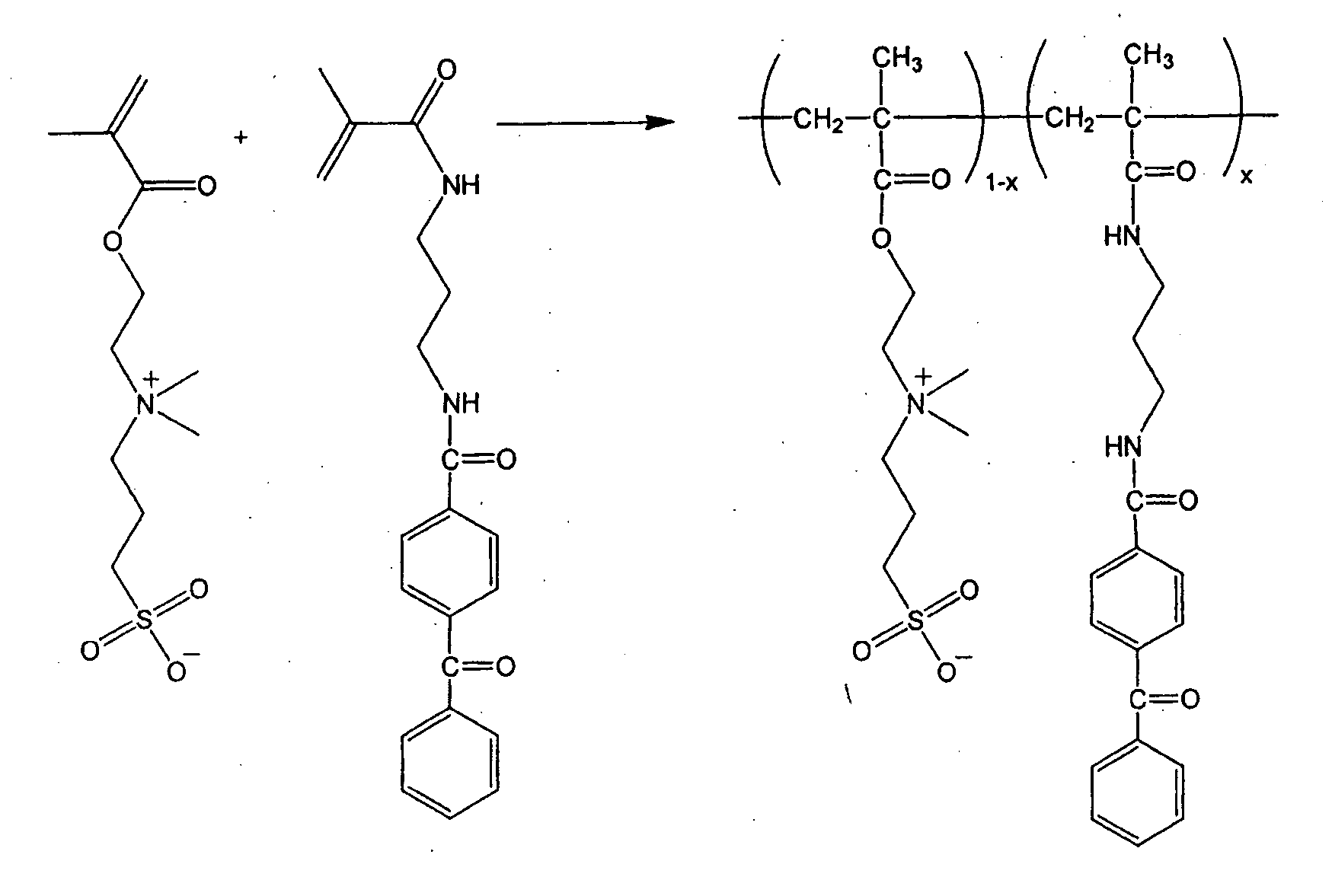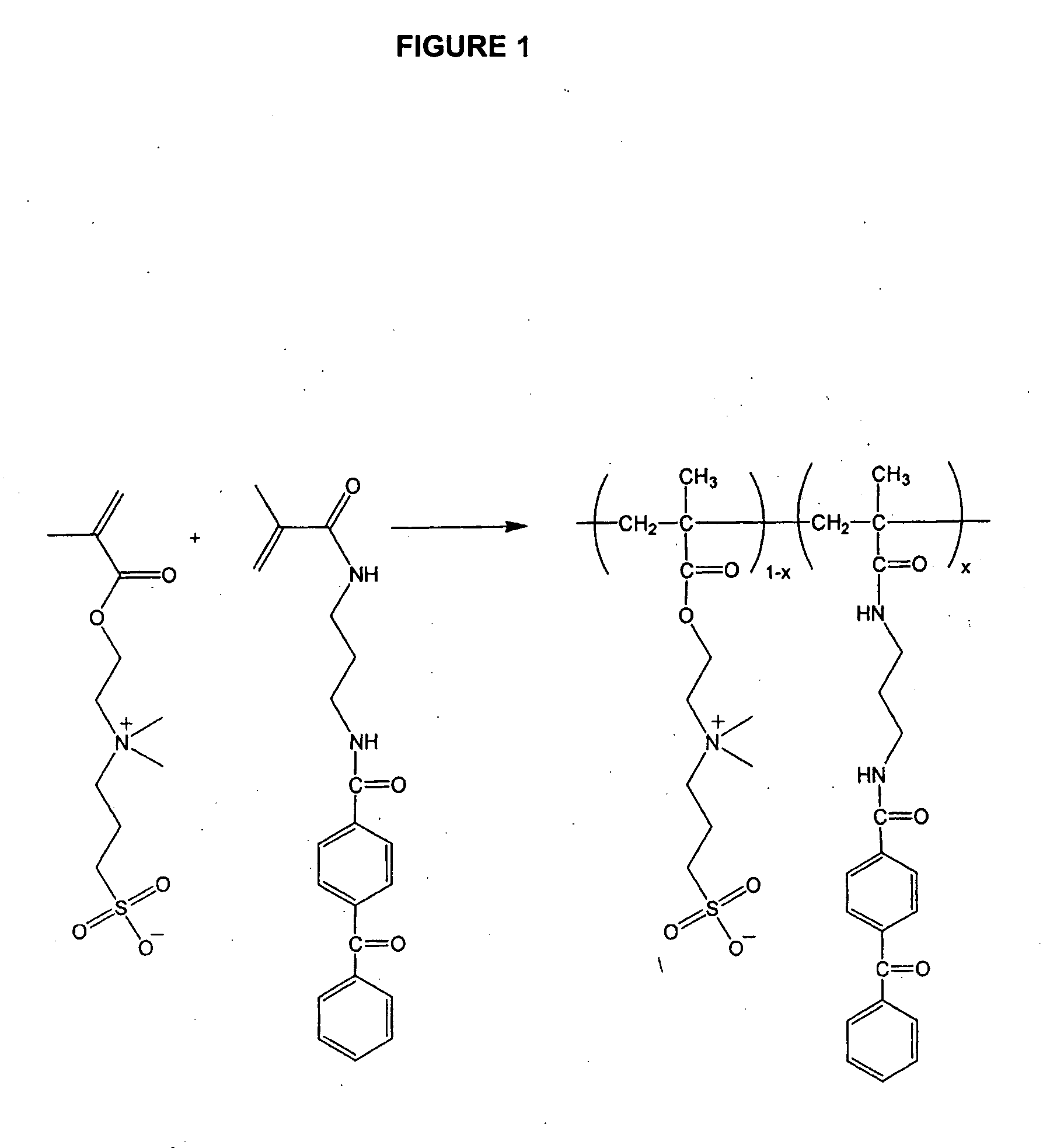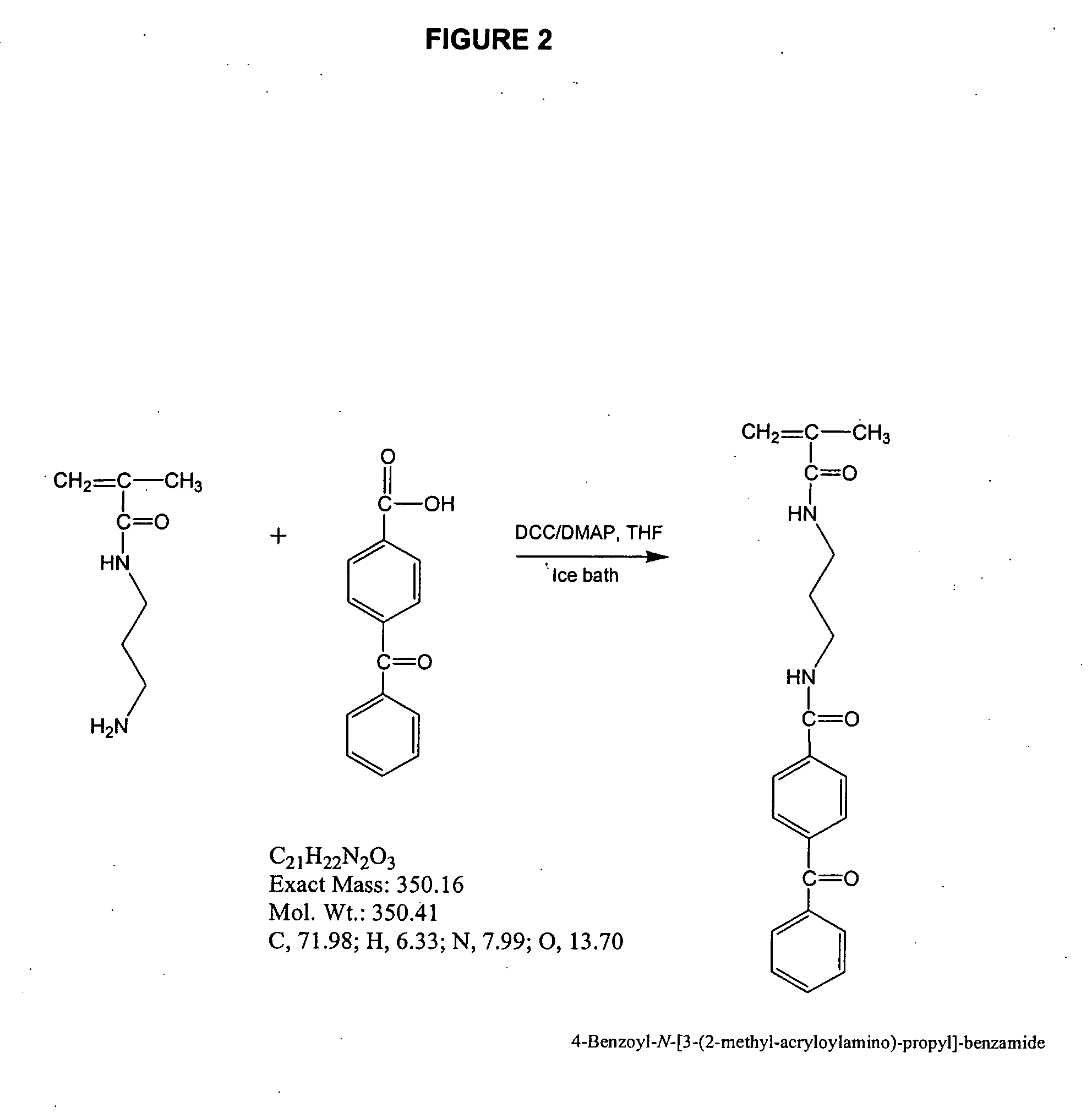Zwitterionic polymers
a polymer and polymer technology, applied in the field of zwitterionic polymers, can solve problems such as significant errors in assays, and achieve the effect of enhancing the versatility and utility of analysis using polymeric surfaces that interact with analy
- Summary
- Abstract
- Description
- Claims
- Application Information
AI Technical Summary
Benefits of technology
Problems solved by technology
Method used
Image
Examples
example 1
Preparation of a Silane Layer on an SiO2-coated Aluminum Surface by Chemical Vapor Deposition (CVD) Process
[0169] A SiO2-coated aluminum substrate was chemically cleaned with 0.01N HCl and methanol in an ultrasonic bath for 20 min. After wet cleaning, the aluminum substrates were further cleaned with a UV / ozone cleaner for 30 min. For CVD silanation, the SiO2-coated aluminum substrates were placed in a reaction chamber along with 3-(trimethoxysilyl)propyl methacrylate (Aldrich). The chamber was evacuated under vacuum, the silane was vaporized and reacted with the surface. The reaction was maintained for 48 h. See, FIG. 9.
[0170] The formation of methacrylate-coated silane layer on the surface was confirmed with surface reflectance FTIR and contact angle measurements.
example 2
Preparation of 4-Benzoyl-N-[3-(2-methyl-acryloylamino)-propyl]-benzamide Monomer
[0171] THF (80 mL), N-(3-aminopropyl)methacrylamide hydrochloride (4.82 g;olysciences, Warrington, Pa.), 4-benzoylbenzoic acid (6.10 g; Aldrich), 3-dicyclohexylcarbodiimide (DCC) (5.60 g), dimethyaminopyridine (0.4 g), and triethylamine (5.5 g) were combined in a dry, 250-mL round bottom flask, equipped with a magnetic stirrer. The solution was cooled with an ice bath and stirred for 3 h. The ice bath was removed and the solution was stirred at room temperature overnight. The precipitates were filtered off and the solvent was evaporated. The residue was re-dissolved in CHCI3. The solution deionized water (3×). The chloroform was removed and the crude product was recrystallized from chloroform / toluene, to give about 60% total yield of the product. 1H NMR confirmed the formation of the desired product. See, FIG. 2.
example 3
Preparation of Copolymer of [2-(Methacryloyloxy)ethyl]dimethyl-(3-sulfopropyl)ammonium hydroxide (SPE) Monomer and 4-Benzoyl-N-[3-(2-methyl-acryloylamino)-propyl]-benzamide Monomer
[0172] To prepare a photocrosslinkable SPE copolymer having 2 mol % benzophenone along the polymer backbone (FIG. 1), [2-(methacryloyloxy)ethyl]dimethyl-(3-sulfopropyl)ammonium hydroxide monomer (4.0 g; Aldrich) was mixed with deionized water (15.0 g), DMSO (10.0 g) and 5 M NaCl solution (3.0 g). 4-benzoyl-N-[3-(2-methyl-acryloylamino)-propyl ]-benzamide (0.102 g) and V-50 (0.018 g; Wako Chemical), a water-soluble, cationic azo-initiator were added. The solution was purged with a flow of argon for 5 min. The vessel was sealed and then heated at 58° C. for 40 h. After polymerization, the solution was viscous. The solution was poured into a large amount of acetone to precipitate the polymer.
PUM
| Property | Measurement | Unit |
|---|---|---|
| Electrical conductivity | aaaaa | aaaaa |
| Energy | aaaaa | aaaaa |
| Hydrophilicity | aaaaa | aaaaa |
Abstract
Description
Claims
Application Information
 Login to View More
Login to View More - R&D
- Intellectual Property
- Life Sciences
- Materials
- Tech Scout
- Unparalleled Data Quality
- Higher Quality Content
- 60% Fewer Hallucinations
Browse by: Latest US Patents, China's latest patents, Technical Efficacy Thesaurus, Application Domain, Technology Topic, Popular Technical Reports.
© 2025 PatSnap. All rights reserved.Legal|Privacy policy|Modern Slavery Act Transparency Statement|Sitemap|About US| Contact US: help@patsnap.com



